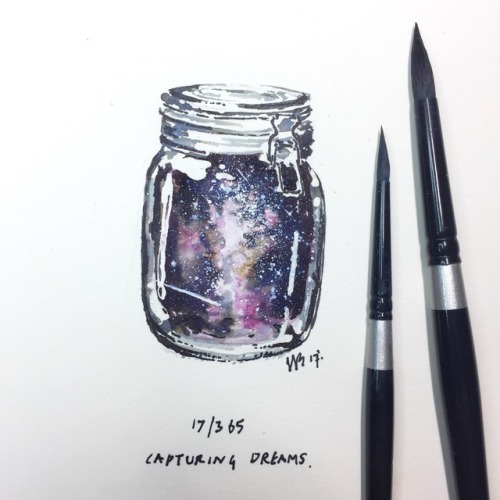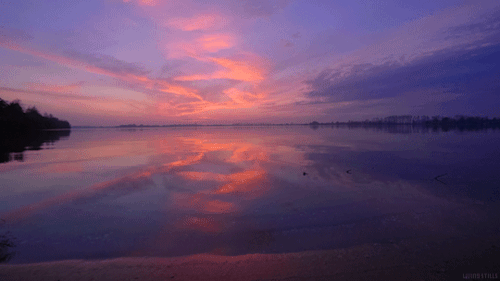I-need-some-space-man-blog - Lexi :)

More Posts from I-need-some-space-man-blog and Others
and maybe the truth is: i don’t love you. maybe i only love the idea of you and even just the idea of love. maybe i’ve spent so long looking and waiting for love that i fell in love with it and you just happen to be there.
realizations. (via uhnsaids)
Solar System: Things to Know This Week
Jupiter, we’ve got quite the photoshoot planned for you. Today, our Juno spacecraft is flying directly over the Great Red Spot, kicking off the first-ever close-up study of this iconic storm and passing by at an altitude of only 5,600 miles (9,000 kilometers). In honor of this historic event, below are 10 things to know about the planet’s most famous feature.

1. A Storm That Puts Others to Shame
The Great Red Spot is a gigantic, high-pressure, ancient storm at Jupiter’s southern hemisphere that’s one of the longest lasting in the solar system. It’s so large, about 1.3 Earths could fit inside of it. And you can bet you’ll get swept away—the storm’s tumultuous winds peak at about 400 mph.
2. How Old Is It?
The Great Red Spot has been swirling wildly over Jupiter’s skies for the past 150 years—maybe even much longer. While people saw a big spot on Jupiter when they started stargazing through telescopes in the 1600s, it’s still unclear whether they were looking at a different storm. Today, scientists know the Great Red Spot has been there for a while, but they still struggle to learn what causes its swirl of reddish hues.

3. Time for That Close-Up
Juno will fly over the Great Red Spot about 12 minutes after the spacecraft makes the closest approach to Jupiter of its current orbit at 6:55 p.m. on July 10, PDT (9:55 p.m. on July 10, EDT; 1:55 a.m. on July 11, Universal Time). Juno entered orbit around Jupiter on July 4, 2016.
4. Oh, So Mysterious
Understanding the Great Red Spot is not easy, and it’s mostly Jupiter’s fault. The planet a thousand times as big as Earth and consists mostly of gas. A liquid ocean of hydrogen surrounds its core, and the atmosphere consists mostly of hydrogen and helium. That translates into no solid ground (like we have on Earth) to weaken storms. Also, Jupiter’s clouds make it hard to gather clear observations of its lower atmosphere.

This false-color image of Jupiter was taken on May 18, 2017, with a mid-infrared filter centered at a wavelength of 8.8 microns, at the Subaru Telescope in Hawaii, in collaboration with observations of Jupiter by NASA’s Juno mission. Credit: NAOJ/NASA/JPL-Caltech
5. Help From Hawaii
To assist Juno’s investigation of the giant planet’s atmosphere, Earth-based telescopes lent their helpful eyes. On May 18, 2017, the Gemini North telescope and the Subaru Telescope—both located on Hawaii’s Mauna Kea peak—simultaneously examined Jupiter in very high resolutions at different wavelengths. These latest observations helped provide information about the Great Red Spot’s atmospheric dynamics at different depths and at other regions of Jupiter.
6. Curious Observations
Observations from Subaru showed the Great Red Spot “had a cold and cloudy interior increasing toward its center, with a periphery that was warmer and clearer,” said Juno science team member Glenn Orton of our Jet Propulsion Laboratory, Pasadena, California. “A region to its northwest was unusually turbulent and chaotic, with bands that were cold and cloudy, alternating with bands that were warm and clear.”

This composite, false-color infrared image of Jupiter reveals haze particles over a range of altitudes, as seen in reflected sunlight. It was taken using the Gemini North telescope in Hawaii on May 18, 2017, in collaboration with observations of Jupiter by our Juno mission. Credits: Gemini Observatory/AURA/NSF/NASA/JPL-Caltech
7. Hot in Here
Scientists were stumped by a particular question: Why were the temperatures in Jupiter’s upper atmosphere comparable to those found at Earth, even though Jupiter is more than five times the distance from the sun? If the sun isn’t the heat source, then what is? Turns out, the storm in the Great Red Spot produces two kinds of turbulent energy waves that collide and heat the upper atmosphere. Gravity waves are much like how a guitar string moves when plucked, while acoustic waves are compressions of the air (sound waves). Heating in the upper atmosphere 500 miles (800 kilometers) above the Great Red Spot is thought to be caused by a combination of these two wave types “crashing,” like ocean waves on a beach.

8. Color Theory
Scientists don’t know exactly how the Great Red Spot’s rich colors formed. Studies predict Jupiter’s upper atmosphere has clouds consisting of ammonia, ammonium hydrosulfide, and water, but it’s still unclear how or even whether these chemicals react. “We’re talking about something that only makes up a really tiny portion of the atmosphere,” said Amy Simon, an expert in planetary atmospheres at NASA’s Goddard Space Flight Center in Greenbelt, Maryland. “That’s what makes it so hard to figure out exactly what makes the colors that we see.” Over at NASA’s Jet Propulsion Laboratory in Pasadena, California, researchers concluded that the ruddy color is likely a product of simple chemicals being broken apart by sunlight in the planet’s upper atmosphere. “Our models suggest most of the Great Red Spot is actually pretty bland in color, beneath the upper cloud layer of reddish material,” said Kevin Baines, a Cassini scientist at JPL.
9. Been There, Haven’t Seen That
In January and February 1979, NASA’s Voyager 1 spacecraft zoomed toward Jupiter, capturing images of the Great Red Spot during its approach. Still, we’ve never been as close as we’re about to get during Juno’s flyover on July 10.

10. Simply Beautiful
This image of a crescent Jupiter and the iconic Great Red Spot was created by a citizen scientist, Roman Tkachenko, using data from Juno’s JunoCam instrument. JunoCam’s raw images are available here for the public to peruse and enhance.Want to learn more? Read our full list of the 10 things to know this week about the solar system HERE.
Make sure to follow us on Tumblr for your regular dose of space: http://nasa.tumblr.com

Capturing Dreams: Submission by hennerzartwork
Please take care of yourself, not because no one else will, but for the reason that love should start from deep within— that somewhere inside you it must begin.
ma.c.a // Let it bloom (via vomitingwords)


Our Food Stories
A lovely batch of Tumblrs
Got a minute? Of course you do. Just a minute. Just click on any of these links below. 60 seconds to allow yourself to decompress. Let go of stress. Enjoy these affirmation-loaded, self-care heavy, soothing-as-heck Tumblrs:

Positive Pastel (@positivepastel)
An aptly titled Tumblr, for sure. Take a visually soothing scroll through this (mostly) soft pink curated blog.
Their mission: “hope to make your day a little brighter.” Their rate of success: we’ll estimate a conservative…100%.
Motivational Tattoos (@motivationaltattoos)

Motivational Tattoos has the one-stop shop for anyone who wants to buy inspiring temporary tattoos, self-care printables, and dissolvable paper in the shape of a thought bubble all in one stop. Something weighing you down? Write it down, place it in some warm water, and watch that heavy thought melt away.

Originally posted by gentle-reminder
Gentle Reminder (@gentle-reminder)
The phrase “gentle reminder” might conjure up the image of old emails and texts from a passive-aggressive someone-or-another. That’s not this Tumblr. Gentle reminder: It reminds you, gently, to do nice things for yourself.

Living Stills (@livingstills)
Remember when people were calling beautiful, artsy GIFs “cinemagraphs” because they seemed to be too beautiful to be called GIFs? @livingstills is full of those GIFs—beautiful, calming GIFs from the outdoors. It’s the second best thing to actually being in nature.
I’ve been trying to sew my life back together after getting torn to pieces and I lost count with my fingers the number of times I’ve been pricked by the needle.
– cjml (via poetpastry)
Written in cold blood your heartache will never be heard. It will only be viewable to the kind hearted. These days are always hard but if you have someone, you’ll always be okay.
@poetpastry (via poetpastry)
The only thing that scares me more than space aliens is the idea that there aren’t any space aliens. We can’t be the best that creation has to offer. I pray we’re not all there is. If so, we’re in big trouble.
Ellen DeGeneres (via ufo-the-truth-is-out-there)
-
 gracieees-blog reblogged this · 2 months ago
gracieees-blog reblogged this · 2 months ago -
 gracieees-blog liked this · 2 months ago
gracieees-blog liked this · 2 months ago -
 guerra--81 liked this · 1 year ago
guerra--81 liked this · 1 year ago -
 apologia-ao--respeito reblogged this · 1 year ago
apologia-ao--respeito reblogged this · 1 year ago -
 cans4do liked this · 1 year ago
cans4do liked this · 1 year ago -
 insaturno reblogged this · 1 year ago
insaturno reblogged this · 1 year ago -
 aalmaferida reblogged this · 1 year ago
aalmaferida reblogged this · 1 year ago -
 ambitiousgeneration reblogged this · 1 year ago
ambitiousgeneration reblogged this · 1 year ago -
 olgagolovina liked this · 1 year ago
olgagolovina liked this · 1 year ago -
 enigma-2000x reblogged this · 1 year ago
enigma-2000x reblogged this · 1 year ago -
 enigma-2000x liked this · 1 year ago
enigma-2000x liked this · 1 year ago -
 afktb liked this · 1 year ago
afktb liked this · 1 year ago -
 i-am-batman liked this · 1 year ago
i-am-batman liked this · 1 year ago -
 m-istletoee liked this · 1 year ago
m-istletoee liked this · 1 year ago -
 lirizar reblogged this · 1 year ago
lirizar reblogged this · 1 year ago -
 caboar liked this · 1 year ago
caboar liked this · 1 year ago -
 miguel-c liked this · 1 year ago
miguel-c liked this · 1 year ago -
 harmonyshield liked this · 1 year ago
harmonyshield liked this · 1 year ago -
 1-4-3l reblogged this · 1 year ago
1-4-3l reblogged this · 1 year ago -
 cityguysstuff liked this · 1 year ago
cityguysstuff liked this · 1 year ago -
 passages-intime reblogged this · 1 year ago
passages-intime reblogged this · 1 year ago -
 aydauzayda reblogged this · 1 year ago
aydauzayda reblogged this · 1 year ago -
 mywazowski liked this · 1 year ago
mywazowski liked this · 1 year ago -
 aydauzayda reblogged this · 1 year ago
aydauzayda reblogged this · 1 year ago -
 aydauzayda liked this · 1 year ago
aydauzayda liked this · 1 year ago -
 passages-intime reblogged this · 1 year ago
passages-intime reblogged this · 1 year ago -
 passages-intime liked this · 1 year ago
passages-intime liked this · 1 year ago -
 mohammadalthiab liked this · 1 year ago
mohammadalthiab liked this · 1 year ago